Best Ichimoku Cloud Books to Buy in December 2025
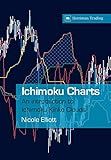
Ichimoku Charts: An Introduction to Ichimoku Kinko Clouds (Harriman Trading)


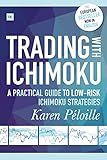
Trading with Ichimoku: A practical guide to low-risk Ichimoku strategies


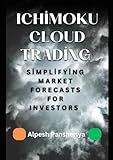
Ichimoku Cloud Trading: Simplifying Market Forecasts for Investors


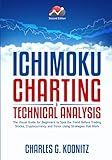
Ichimoku Charting & Technical Analysis: The Visual Guide for Beginners to Spot the Trend Before Trading Stocks, Cryptocurrency and Forex using Strategies that Work (second edition)


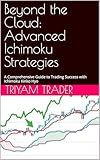
Beyond the Cloud: Advanced Ichimoku Strategies: A Comprehensive Guide to Trading Success with Ichimoku Kinko Hyo


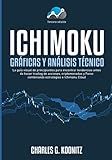
Ichimoku Gráficas y análisis técnico: La guía visual de principiantes para encontrar tendencias antes de hacer trading de acciones, criptomonedas y ... e Ichimoku Cloud (Spanish Edition)


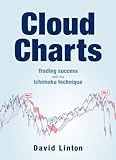
Cloud Charts Trading Success with the Ichimoku Technique


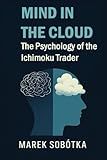
MIND IN THE CLOUD: The Psychology of the Ichimoku Trader


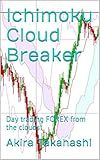
Ichimoku Cloud Breaker: Day trading FOREX from the clouds!


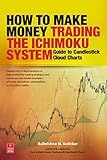
How to Make Money Trading the Ichimoku System: Guide to Candlestick Cloud Charts


The Ichimoku Cloud is a popular technical analysis tool used by traders and investors to identify potential buy and sell signals in the financial markets. Developed by Japanese journalist Goichi Hosoda in the late 1960s, it is also known as the Ichimoku Kinko Hyo, which translates to "one glance equilibrium chart."
The Ichimoku Cloud consists of several components that work together to provide a comprehensive view of price action and potential support and resistance levels. These components include:
- Tenkan-sen (Conversion Line): This is a fast-moving line that represents the average of the highest high and lowest low over the past nine periods.
- Kijun-sen (Base Line): This line is a slower-moving average calculated in a similar way to the Tenkan-sen, but over the past 26 periods.
- Senkou Span A (Leading Span A): This line represents the average of the Tenkan-sen and Kijun-sen, plotted 26 periods ahead. It forms the upper boundary of the cloud in the Ichimoku Cloud.
- Senkou Span B (Leading Span B): This line represents the average of the highest high and lowest low over the past 52 periods, also plotted 26 periods ahead. It forms the lower boundary of the cloud.
- Chikou Span (Lagging Span): This line represents the closing price of the current period, plotted 26 periods behind on the chart. It is used to identify potential support and resistance levels.
The space between Senkou Span A and Senkou Span B forms the Ichimoku Cloud, also known as the Kumo. The cloud visually represents support and resistance levels and helps traders identify potential trend reversals. When the price is above the cloud, it indicates a bullish trend, while the price below the cloud suggests a bearish trend.
In addition to the cloud, traders often look for the Tenkan-sen and Kijun-sen crossover signals. When the Tenkan-sen crosses above the Kijun-sen, it generates a bullish signal, indicating a potential buying opportunity. Conversely, when the Tenkan-sen crosses below the Kijun-sen, it generates a bearish signal, indicating a potential selling opportunity.
The Chikou Span's interaction with past price action is also important. If the Chikou Span crosses above the past price, it suggests a bullish signal, while a cross below indicates a bearish signal.
Traders use the Ichimoku Cloud in conjunction with other technical analysis tools and indicators to confirm trade signals and make more informed decisions. It is recommended to practice and gain experience with the Ichimoku Cloud before using it as a primary trading strategy.
How to adjust the Ichimoku Cloud settings based on market conditions?
Adjusting the Ichimoku Cloud settings based on market conditions can help traders to optimize their trading strategy. Here are some considerations to take into account:
- Timeframe: The Ichimoku Cloud indicator consists of several components, including the Tenkan-sen, Kijun-sen, Senkou Span A and B, and the Chikou Span. The default settings in most charting platforms use the values of 9, 26, 52, and 26 periods respectively. However, the appropriate timeframe depends on the trading style and market conditions. For shorter timeframes like day trading, it may be necessary to use shorter settings to capture more recent market information and reduce lag. Conversely, longer timeframes like swing trading or investing may require longer settings for a more significant price perspective.
- Market volatility: In highly volatile markets, it is common to adjust the Ichimoku Cloud settings to adapt to these conditions. Increasing the values of the components can help to smooth out signals and reduce false breakouts or whipsaws. On the other hand, during periods of low volatility, decreasing the values can provide more sensitive signals and better capture price movements.
- Asset class: Different asset classes and markets have distinct characteristics that may require adjusting the Ichimoku Cloud settings. For example, currencies tend to have larger short-term swings, so shorter settings may be more suitable. Conversely, stocks or indices may require longer periods to filter out noise and provide more reliable signals. Additionally, commodities or futures markets may have their own unique dynamics, and respective settings should be determined based on historical price patterns and market behavior.
- Backtesting and analysis: It is essential to backtest different Ichimoku Cloud settings to evaluate their performance in specific market conditions. Use historical price data to compare the results of different settings and determine which ones provide the best signals and results for your trading strategy. Analyzing the effectiveness of the indicator with different settings can help identify the optimal adjustment.
- Continuous monitoring and adjustment: The market conditions are dynamic and can change over time. Therefore, it is crucial to continuously monitor the performance of the Ichimoku Cloud indicator with the chosen settings and adjust them accordingly. Regularly reviewing the indicator's effectiveness will ensure it remains aligned with the current market environment.
Always remember that adjusting the Ichimoku Cloud settings should be done cautiously and in combination with other technical indicators or analysis methods. It is essential to consider a holistic view of the market and avoid relying solely on one indicator for trading decisions.
How to apply Ichimoku Cloud to different financial markets? (stocks, forex, etc.)
The Ichimoku Cloud is a versatile technical analysis tool that can be applied to various financial markets including stocks, forex, commodities, and even cryptocurrencies. Here's how you can apply the Ichimoku Cloud to different markets:
- Stocks: Identify the Ichimoku Cloud components on a stock chart, including the Tenkan Sen (Conversion Line), Kijun Sen (Base Line), Senkou Span A (Leading Span A), and Senkou Span B (Leading Span B). Look for the Tenkan Sen crossing above the Kijun Sen as a potential bullish signal, and vice versa for bearish signals. Assess the position of the price relative to the Cloud. If the price is above the Cloud, it indicates a bullish trend, while a price below the Cloud suggests a bearish trend. Monitor the interaction between the price and the Leading Span A and B lines, which can act as support or resistance levels.
- Forex: Apply the same principles as stocks but adapt them to the forex market. Use the Ichimoku Cloud to identify potential trend reversals, especially when the Tenkan Sen and Kijun Sen lines cross over each other. Analyze the Cloud to determine the market sentiment. A bullish sentiment occurs when the price is above the Cloud, while a bearish sentiment happens when the price is below the Cloud. Combine the Ichimoku Cloud analysis with other technical indicators such as moving averages or Fibonacci retracements for confirmation.
- Commodities: Follow the same methodology as stocks and forex when applying the Ichimoku Cloud to commodities. Look for trend reversals when the Tenkan Sen and Kijun Sen lines intersect. Evaluate the position of the price relative to the Cloud to determine the market sentiment. Consider using the Cloud as a dynamic support or resistance level for commodity prices.
Remember, the Ichimoku Cloud is just one tool in technical analysis, so it is recommended to combine it with other indicators and perform thorough analysis before making any trading decisions. Additionally, practice using the Ichimoku Cloud on different markets in a demo account before applying it with real money.
What is the suggested timeframe to use Ichimoku Cloud for day trading?
The suggested timeframe to use Ichimoku Cloud for day trading is the 1-hour chart. This timeframe allows for a sufficient number of trading opportunities while still providing enough price data to generate accurate signals. However, some traders may also use the 30-minute or 15-minute charts for more frequent trades, while others may opt for the 4-hour or daily charts for longer-term trends. Ultimately, the choice of timeframe depends on individual trading preferences and strategies.
What is the Senkou Span B line's importance in Ichimoku Cloud?
The Senkou Span B line is one of the five components of the Ichimoku Cloud technical indicator. It represents the average of the highest high and the lowest low over a specific time period, typically 52 periods, and it is projected forward by the same distance.
The Senkou Span B line plays a crucial role in determining the overall trend and providing insight into potential support and resistance levels. The region between the Senkou Span A (another component of the Ichimoku Cloud) and Senkou Span B lines creates the "cloud" or "kumo" on the Ichimoku chart. This cloud acts as a dynamic support or resistance zone.
The Senkou Span B line's location relative to the Senkou Span A line is also significant. If the Senkou Span B is located above the Senkou Span A, it suggests that the overall trend is bullish. Conversely, if the Senkou Span B is below the Senkou Span A, it indicates a bearish trend.
Traders often use the position of the Senkou Span B line in relation to the cloud to identify potential areas of support and resistance, as well as to determine entry and exit points for trades. It helps to identify the strength and direction of the trend and can provide confirmation for potential trading opportunities.
